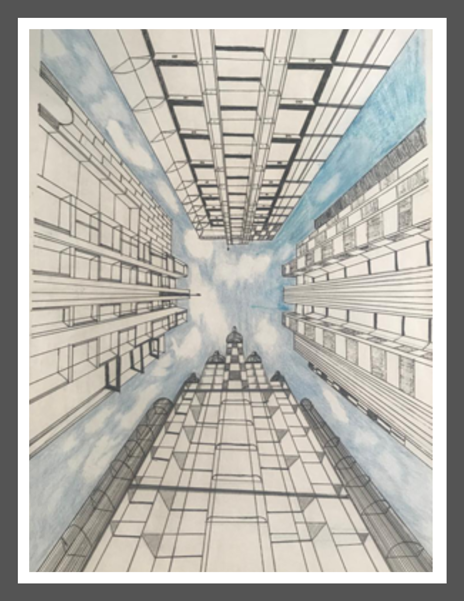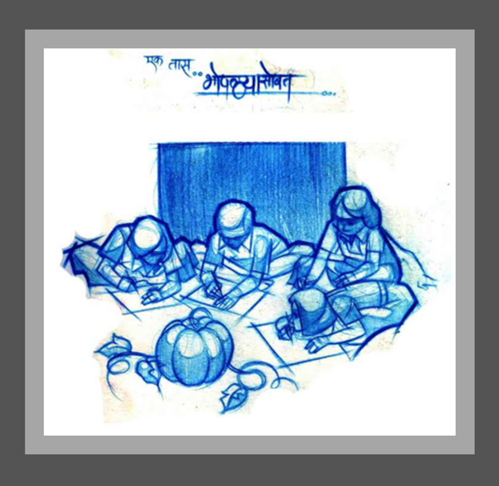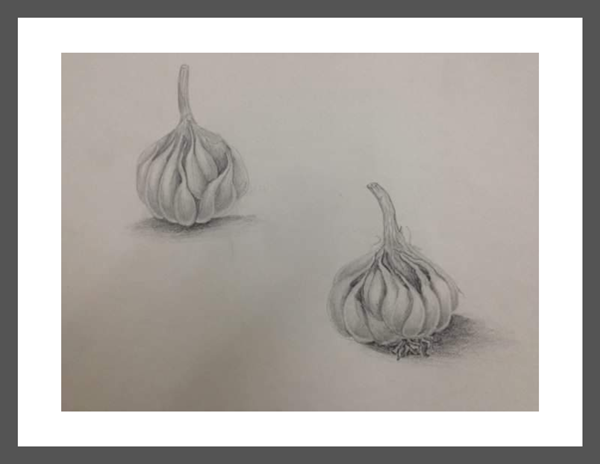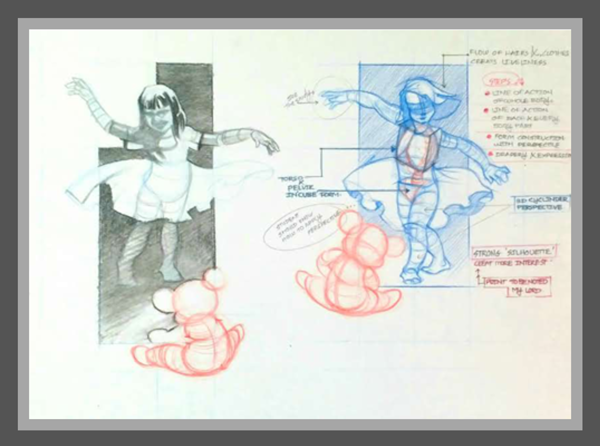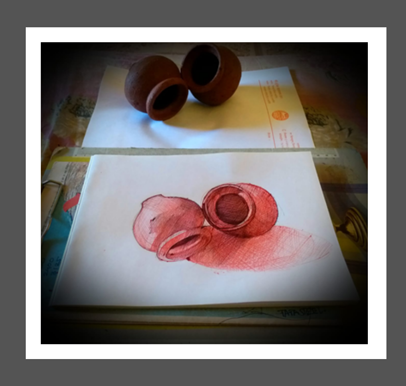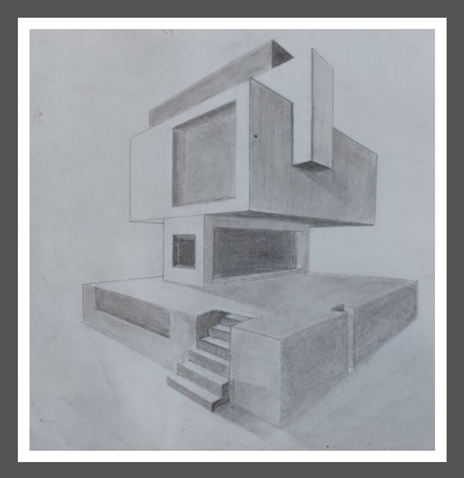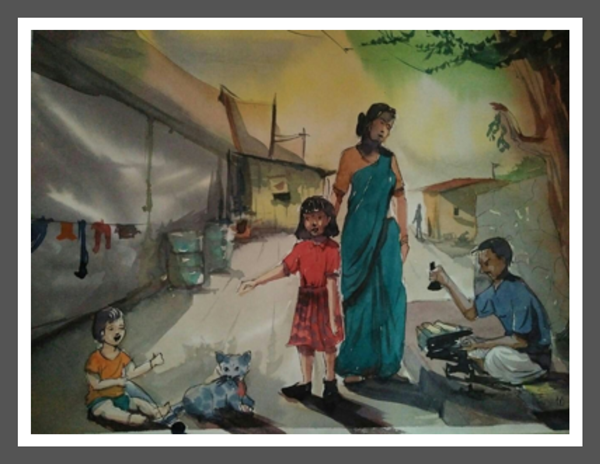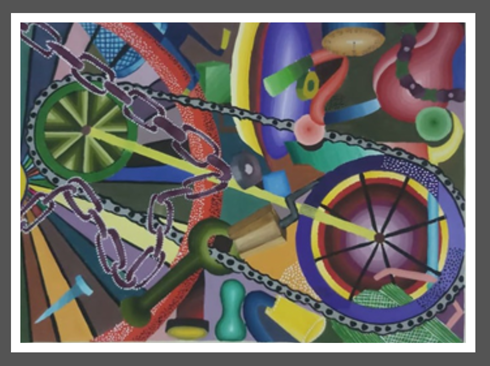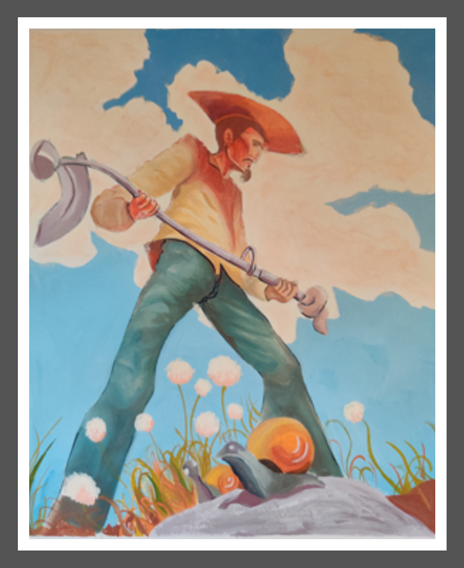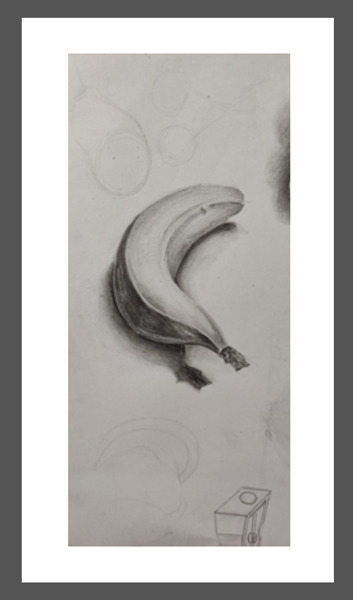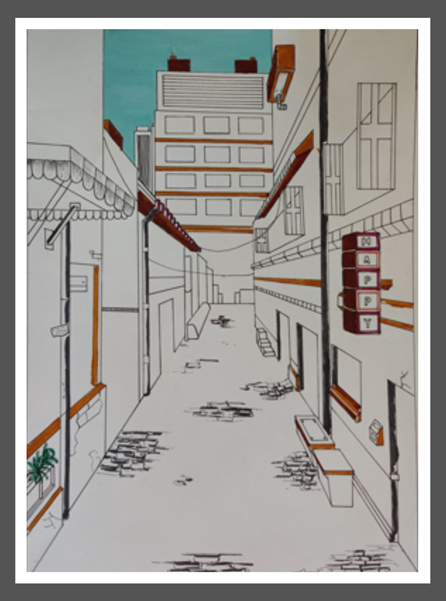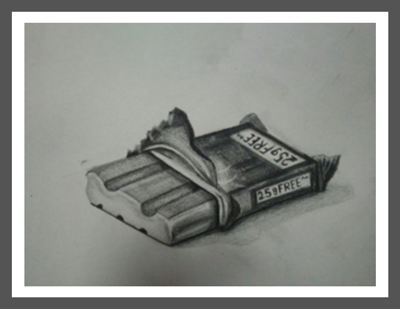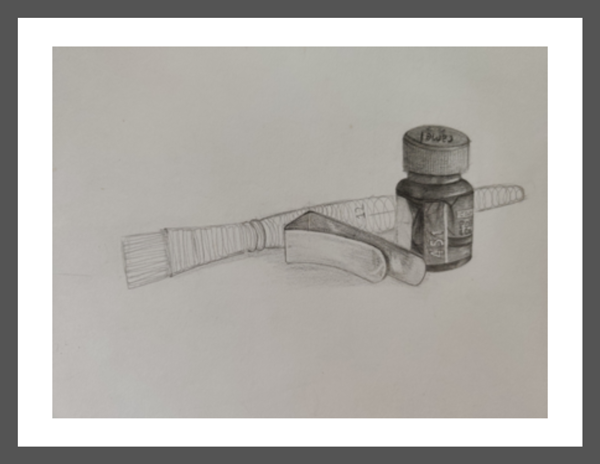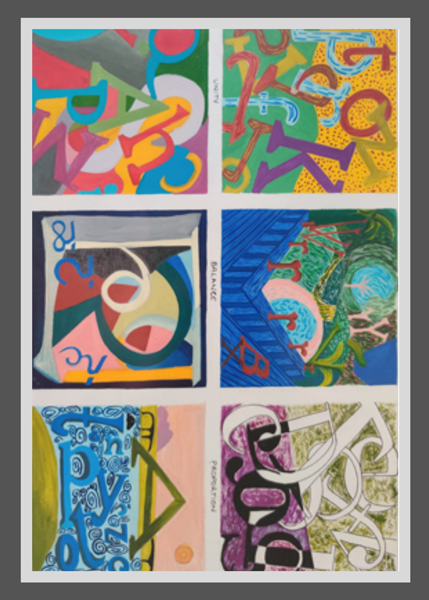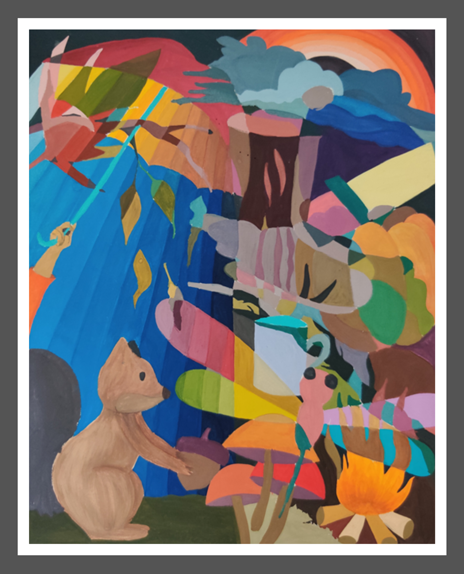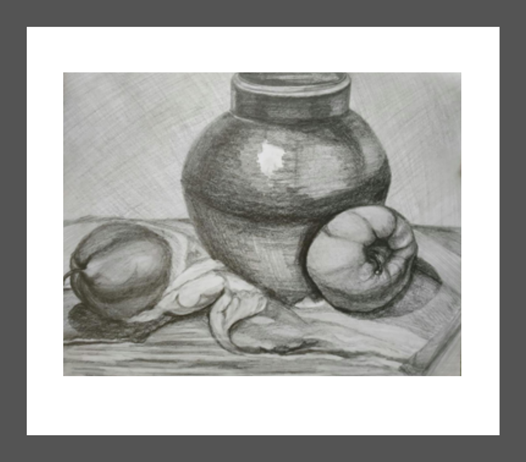Entrance Exams Preparation
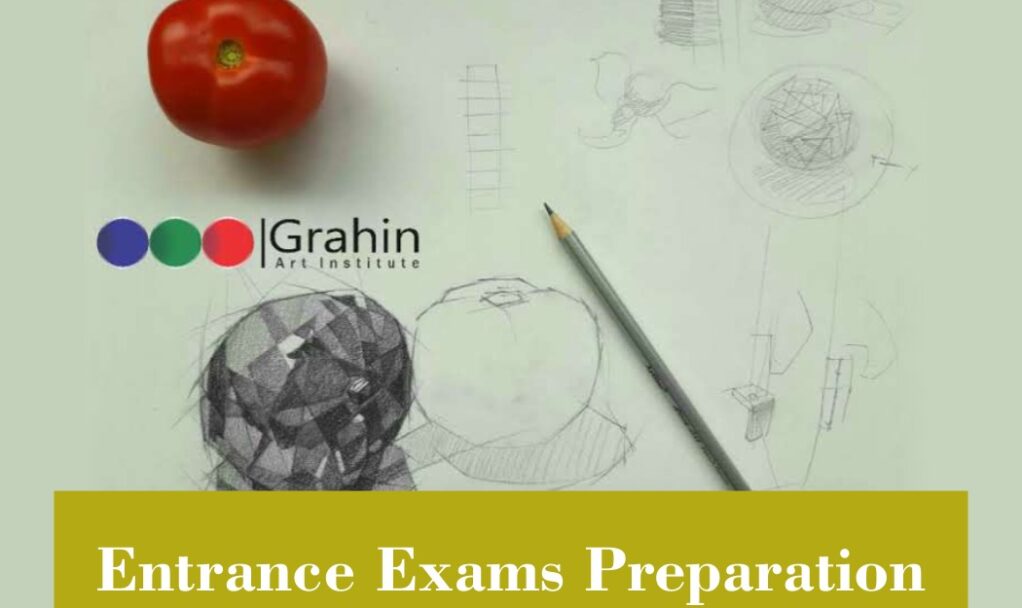
With a plethora of entrance exams hosted annually by both the state government and private institutes, the demand for comprehensive preparation and study material is ever-increasing. Grahin Art Institute recognizes this need and offers dedicated coaching to help students excel in these competitive exams. From the elementary drawing exam and intermediate drawing exam to the specialized elementary exam in Ghatkopar, our institution provides extensive one-year coaching courses for students seeking to apply for them.
These entrance exams, including MAH-AAC-CET, CEED, NID, NIFT, NATA, and Pearl Academy entrance exams, determine admission to premier colleges and universities. Each of these esteemed institutions employs a unique teaching methodology and sets specific standards for aspiring students. With unwavering dedication and a commitment to delivering top-quality education, Grahin Art Institute ensures that every facet of the entrance exams is efficiently covered, allowing students to gain a thorough understanding.
Our courses not only strengthen the foundation of students but also impart knowledge in aesthetics, design, art, illustrations, and the creation of visual works. These aspects are crucial for success in the elementary drawing exam and intermediate drawing exam, ensuring students are well-prepared to face the challenges posed by these demanding examinations.
Here are some of the popular elementary drawing exams that students should be prepared for:
NID: NID stands as Asia’s premier institution for Design education. It administers a Design Aptitude Test (DAT) comprising Prelims and Mains for admission to its M.Des and B.Des programs. The DAT Prelims involves a written test, while the DAT Mains includes a studio test and interview.
NIFT: NIFT is India’s leading institution for Fashion Design. Here, admission is determined by meeting eligibility criteria and clearing the NIFT entrance exams, which include written tests (CAT & GAT papers) and practical tests (Situation Test & GDPI).
U/CEED: IIT administers UCEED & CEED exams for B.Des & M.Des program admissions. Each exam comprises two parts: Part A, a computer-based objective test, and Part B, involving drawing, creativity, visualization, and problem-solving questions.
NATA: NATA (National Aptitude Test in Architecture) is conducted by COA (Council of Architecture), the regulatory body for Architecture education and practice in India. Candidates seeking admission to a B.Arch program in India must clear either JEE-Mains-Paper-II or NATA before applying to any college. COA and the Government of India mandate the NATA for admission into B.Arch colleges and B.Arch degree programs. The NATA test assesses candidates’ aptitude for architectural study, evaluating skills in drawing, observation, reasoning, aesthetics, and 10+2 level Physics, Chemistry, and Maths. It also tests critical and analytic thinking, as well as knowledge in architecture-related subjects like history, climatology, building methods, and materials.
MAH-AAC-CET: This is a state-level entrance test for admission to the first year of full-time Undergraduate (UG) visual art courses in fine art and applied art in Maharashtra. Candidates who have completed or are appearing in 10+2 are eligible to apply. The exam, conducted both online and offline, assesses the candidate’s general knowledge.
NID
Preparation for the NID entrance exam involves a comprehensive understanding of design principles, creativity, and problem-solving skills. Grahin Art Institute offers coaching and guidance to help students excel in the exam. Here are some specific areas that are often covered in the curriculum for NID exam preparation:
Design Fundamentals: Understanding the basic principles of design, including elements like line, shape, form, color, and texture. Students learn how to apply these principles in various design contexts.
Drawing and Sketching: Developing strong drawing and sketching skills is crucial. Students are often taught different drawing techniques, perspective, and observational drawing to enhance their visual communication abilities.
Creativity and Innovation: Fostering creativity is a key aspect of the preparation. Students are encouraged to think outside the box, explore unconventional ideas, and develop a unique design perspective.
Problem-Solving: The NID exam assesses how well candidates can approach and solve design problems. Students are trained to analyze problems, generate multiple solutions, and choose the most effective one.
Colour Theory: Understanding the principles of colour, its psychological impact, and how to use colour effectively in design. This includes both theoretical knowledge and practical application.
Material Exploration: Familiarity with different materials and their properties. Students learn how to choose and work with materials suitable for specific design projects.
Visual Communication: Developing skills in conveying ideas visually. This includes creating design layouts, understanding visual hierarchy, and effectively communicating a message through design.
Portfolio Development: Guidance on how to create a strong design portfolio that showcases the candidate’s skills, creativity, and ability to solve design problems.
Mock Tests and Practice Sessions: To prepare for the exam format, students often take part in mock tests and practice sessions. This helps them become familiar with the exam structure and time constraints.
Interview and Studio Test Preparation: Many art institutions guide how to prepare for the interview and studio test components of the NID entrance exam. This includes mock interviews and practical exercises.
NIFT
At Grahin Art Institute, we craft futures in fashion through focused and industry-relevant preparation for the NIFT exam. Here are some specific areas that are often covered in the curriculum for NIFT exam preparation:
Fashion Sketching: Dive into the world of visual expression, mastering the art of fashion illustration. Develop the skill to translate concepts into captivating designs.
Textile Knowledge: Understand the language of fabrics and materials. Grasp the intricacies of weaves, textures, and materials crucial in bringing fashion concepts to life.
Creativity and Design Thinking: Embrace a culture of innovation. Cultivate problem-solving skills that empower you to tackle design challenges with creativity and strategic thinking.
Colour Theory: Explore the impact of colour in fashion. Learn to use colour effectively, considering its psychological and aesthetic nuances in design.
Pattern Making: Unlock the secrets of pattern creation. Acquire the skill to design and draft patterns for diverse garment styles.
Portfolio Development: Craft a visual narrative that showcases your unique creativity and technical proficiency. Your portfolio is your voice—make it resonate.
Current Fashion Trends: Stay ahead in the ever-evolving world of fashion. Explore and adapt to the latest trends, ensuring your designs are contemporary and relevant.
GAT and CAT Sections: Prepare strategically for the General and Creative Ability Tests. Navigate the exam with confidence, maximizing your performance.
Mock Tests: Experience the exam environment before the big day. Our mock tests simulate real conditions, refining your ability to perform under pressure.
Interview Preparation: Develop effective communication skills for admissions interviews. Present yourself confidently and articulately, leaving a lasting impression.
U/CEED
At Grahin Art Institute, our comprehensive curriculum for U/CEED (Undergraduate Common Entrance Examination for Design) exam preparation is strategically crafted to empower students with the skills needed to excel in the world of design. We take pride in offering a holistic approach to this exam preparation, ensuring that our students not only succeed in the exam but also thrive in the dynamic world of design.
Design Thinking and Problem Solving: Cultivating a mindset focused on innovative problem-solving, students learn to approach design challenges with creativity and strategic thinking.
Visual Communication: Sharpening skills in conveying ideas visually. Students delve into the principles of visual hierarchy, layout design, and effective communication through visual mediums.
Sketching and Rendering Techniques: Mastering the art of sketching is paramount. Our students develop proficiency in various rendering techniques, ensuring their ideas are translated into visually compelling designs.
Creativity Enhancement: Fostering creativity as a core competency. Through various exercises and projects, students explore and expand their creative boundaries.
Observation and Visual Perception: Fine-tuning observation skills is critical. Students engage in exercises to enhance visual perception, vital for accurately representing the world around them.
3D Visualization: Developing the ability to visualize and represent three-dimensional forms accurately. This skill is crucial for design disciplines where spatial understanding is paramount.
Mock Tests and Time Management: Practice makes perfect. Regular mock tests simulate exam conditions, allowing students to refine their time management skills and familiarize themselves with the UCEED exam format.
Portfolio Development: Crafting a compelling portfolio is an art in itself. Our students receive guidance on curating a portfolio that not only showcases their skills but also reflects 2their unique design perspective.
Interview Preparation: Navigating the interview process with confidence. Students receive guidance on effective communication, articulating their ideas, and presenting their portfolios during admissions interviews.
Digital Design Tools: Equipping students with proficiency in relevant digital design tools. Familiarity with software used in the design industry enhances their readiness for the evolving landscape of design practices.
NATA
At Grahin Art Institute, our tailored curriculum for NATA (National Aptitude Test in Architecture) exam preparation is designed to equip students with the skills and knowledge required for success in the field of architecture.
Architectural Drawing: Mastering the art of architectural drawing is fundamental. Our students delve into perspectives, proportions, and spatial relationships, honing their ability to visually communicate architectural ideas.
Observation and Sketching: Developing acute observation skills is paramount for architects. Students practice sketching from life, enhancing their ability to capture and interpret the world around them.
Aesthetic Sensitivity: NATA places a significant emphasis on aesthetic awareness. Our curriculum includes training in identifying visual principles, elements, and their application in design.
Creativity Enhancement: Fostering creativity is at the core of our program. Through design projects and exercises, students explore innovative solutions and expand their creative boundaries.
Mathematics and General Aptitude: NATA evaluates mathematical and general aptitude skills. Our curriculum ensures students are well-prepared in these areas, covering relevant topics and providing strategic problem-solving techniques.
Architectural Awareness: Knowledge of historical and contemporary architectural trends is crucial. Our students gain insights into architectural history, prominent architects, and contemporary design movements.
3D Visualization: Developing the ability to visualize three-dimensional forms accurately is essential. Students engage in exercises to enhance spatial understanding and representation skills.
Mock Tests and Time Management: Regular mock tests simulate the NATA exam conditions, helping students refine their time management skills and familiarize themselves with the exam format.
Portfolio Development: Crafting a comprehensive portfolio showcasing architectural skills and design thinking. Our guidance ensures that the portfolio aligns with NATA requirements and reflects the unique style of each student.
Interview Preparation: Navigating the interview process confidently. Our students receive guidance on effective communication, articulating design ideas, and showcasing their portfolios during admissions interviews.
MAH-AAC-CET
The specialized curriculum for the MAH-AAC-CET (Maharashtra Applied Arts and Crafts Common Entrance Test) exam preparation by our professionals is meticulously designed to empower students with the skills required to excel in the field of applied arts.
Visual Communication: Mastering the language of visual communication is fundamental. Our curriculum focuses on principles of design, layout, and effective visual storytelling.
Drawing and Illustration Techniques: Building proficiency in drawing and illustration is paramount for applied arts. Our students hone their skills in various techniques, styles, and mediums.
Aesthetic Sensitivity: MAH-AAC-CET evaluates aesthetic awareness. Our program includes training in identifying visual principles, elements, and their application in applied arts.
Creativity Enhancement: Fostering creativity is a cornerstone of our program. Through projects and exercises, students explore innovative solutions, expanding their creative boundaries.
Material and Technique Exploration: Understanding the diverse materials and techniques used in applied arts. Students experiment with various mediums to express their ideas effectively.
General Knowledge and Current Affairs: A well-rounded artist is also well-informed. Our curriculum covers relevant general knowledge and current affairs topics to prepare students for the exam’s interdisciplinary approach.
Portfolio Development: Crafting a comprehensive portfolio showcasing applied arts skills. Our guidance ensures that the portfolio aligns with MAH-AAC-CET requirements and reflects the unique style of each student.
Mock Tests and Time Management: Regular mock tests simulate the MAH-AAC-CET exam conditions. This practice helps students refine their time management skills and familiarize themselves with the exam format.
Interview Preparation: Navigating the interview process confidently. Our students receive guidance on effective communication, articulating design ideas, and presenting their portfolios during admissions interviews.
The course content mentioned is meant to provide an overview of the current offerings in this department; it does not represent all requirements for the Major or Area of Emphasis. If you have questions regarding your specific curricular requirements and/or Course, contact us Coordinator at +91 8369519253 / 9137141438.
Entrance Exams Preparation : 48 sessions | |
|---|---|
| 1. Elements of Art | 2. Nature & Object Drawing |
| 3. Perspective Study | 4. Gradation Study |
| 5. Anatomy Study | 6. Motor skills and Forms |
| 7. Introducing to Sketching | 8. Elements of Design |
| 9. Principles of Design | 10. Colour Theory |
| 11. Introduction to Communication Skills | 12. Introduction to Digital Workspace |
| 13. Design Concept Creative Thinking | 14. Portfolio Designing |
| 15. Outdoor Study Tour | 16. Art Exhibition |

